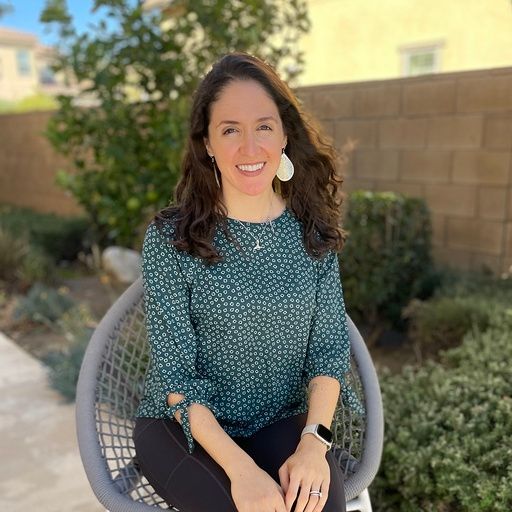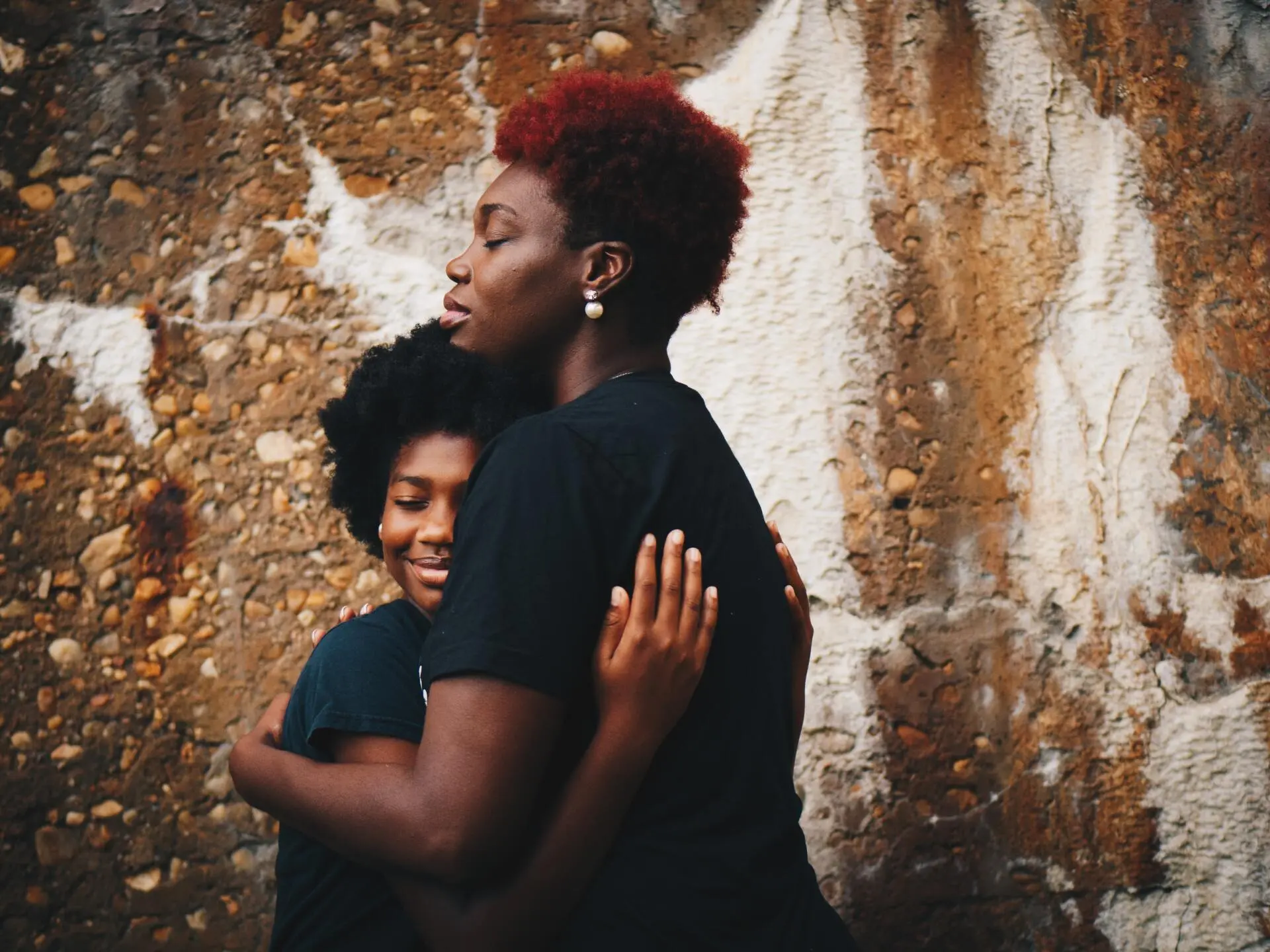Understanding the Science Behind Children Lying

Understanding the Science Behind Children Lying
Why do children lie—even when they know it’s wrong? In this article, we’ll explore the science behind dishonesty and how our fears about lying may clash with our children’s natural development. Then we will discuss ideas and strategies for raising emotionally intelligent kids who are empowered to make mature choices rooted in honesty.
But before we dig into the research, let’s zoom out and look at the big picture. The science is clear: Lying is not just a behavioral issue but a significant milestone in cognitive development.
It can be confusing for us parents to consider that lying is part of healthy human development. Many of us have operated under the belief that “all lying is bad”, which makes sense. And this new way of thinking about it doesn’t mean that we take a passive approach and condone lying. Instead, it invites us to shift how we think of our role.
What if lying didn’t mean that your child was headed down a bad and evil path…but instead on track with their brain development?
Normalizing that lying happens at all stages of development and is even essential helps take some fear and pressure off our parenting. This helps us shift from reactive control (like punishment) to intentional support and guidance.
As parents, we have a chance to scaffold this phase in a way that honors both our values and our child’s normal growth. To do that, it helps to examine what we bring to the table – especially the stories we inherited about truth, consequences, and control. Here are a few questions to consider:
- How did your family and community respond to lying when you were a child?
- What did you learn about honesty, and what happened when you told the truth?
- Do you believe that some lying is okay? Or does all lying feel threatening?
These reflections are important because the way we interpret a lie shapes how we respond to our kids. And how we respond to our kids shapes what our child learns; not just about honesty, but about safety, shame, and connection with others.
Understanding where our beliefs come from helps us shift from subconscious parenting to empowered parenting.
In this article, we invite you to bring an open mind and a willingness to confront these beliefs you carry about what it means to lie and how our limiting beliefs may be getting in the way of our parenting capabilities.
What if we moved beyond ‘all lying is bad’ to explore what’s really underneath?
Sometimes we lie with good intentions. Many times, we lie to protect ourselves or others. And when we rush to the punishments and consequences, we miss the opportunities to understand the why behind the lying. The why is key for understanding how to support our kids.
It is key for helping our children to find other ways to get their needs met and to practice being honest, even when it’s hard. And it is essential that we get honest about the ways that we adults may be modeling behaviors that are misaligned with our family values.
Brain Development and What It Teaches Us About Lying
Lying isn’t just a choice—it’s a reflection of your child’s developing brain.
The brain develops rapidly in the first 5 years of life, and then continues to be under construction until the age of 25. Many brain areas are coming online through these developmental years:
- The cerebellum develops coordination and muscle control.
- The temporal lobe helps interpret sound, language, and social signals.
- The occipital lobe processes vision.
- The parietal lobe takes in and makes sense of sensory information like pressure, pain, and temperature.
- The frontal lobe develops until adulthood, and it’s where the advanced human processing takes place – from thoughts and voluntary behaviors, intention and memories, goal formation, abstract thinking, planning, and impulse control.
As the brain develops over the first 25 years of life, each phase brings forth new implications and challenges in parenting. Lying is a common parenting challenge, rooted in the child’s growing capacity to understand social dynamics. It takes time to learn the nuances of the social world we live in.
Dr. Kang Lee shares in his TED Talk that kids lie more as they get older because of their advancing cognitive abilities. His research suggests that kids who lie earlier and better may even have stronger cognitive capabilities, like problem-solving and understanding others’ perspectives. (A positive side effect of a challenging area to navigate as parents.)
When we can accept that lying is part of normal development (and may even have benefits), we can begin to shift from our scary stories, like “my kid is doomed,” to empowered stories, like “this is normal AND I can find ways to support their healthy development.”
The ability to lie represents several advanced cognitive and neurological processes coming online. Let’s break down some of the key contributors:
Theory of Mind (Around Ages 3–5)
This is the brain's growing ability to imagine the thoughts, beliefs, and perspectives of others. Once a child understands that you can believe something different from what they do, they realize they can
influence what you believe. Lying becomes possible at this stage, and it coincides with the maturation of the
temporoparietal junction and
prefrontal cortex, key regions involved in social reasoning and executive control.
Executive Functioning (Prefrontal Cortex, Ages 3–25+)
Lying also depends on a child’s ability to inhibit their natural impulse to blurt out the truth and instead choose a more strategic (even deceptive) response. This requires inhibitory control, working memory, and cognitive flexibility—all functions governed by the prefrontal cortex. Since this area of the brain continues developing well into the mid-twenties, children and teens will have varying capacity to control impulses or reflect on the long-term consequences of lying.
Emotional Regulation (Limbic System + Cortical Modulation)
Lying is often driven by fear, embarrassment, or the desire to stay connected. The emotional brain—especially the amygdala and insula—can activate stress responses when a child fears punishment or disconnection.
Their developing cortex may not yet be able to modulate this fear effectively, especially in emotionally charged moments. This helps us understand why children sometimes double down on lies even when caught: their nervous system perceives danger.
In addition to these brain processes taking shape, we can break down what to expect with lying by age and cognitive development:
Ages 2–3: Primary Lies
- Children begin telling simple, often transparent lies (e.g., denying spilling juice while standing next to the mess).
- These early lies indicate the emergence of basic cognitive skills, such as understanding that others can hold different beliefs—a foundational aspect of the theory of mind.
Ages 4–5: Strategic Lies
- With further development of the theory of mind, children start crafting more strategic lies to avoid punishment or gain rewards.
- They begin to understand that others can be deceived, reflecting growing cognitive sophistication.
Ages 6–7: Moral Understanding Emerges
- Children develop a clearer sense of right and wrong and may feel guilt or shame when lying.
- Lies at this stage are often used to avoid punishment, but children are increasingly aware of the moral implications.
Ages 8–11: Nuanced Lying
- Children understand the concept of "white lies" and may use them to protect others' feelings or maintain social harmony.
- They recognize that honesty is valued, but may still lie to avoid embarrassment or gain approval.
Ages 12–14: Identity and Autonomy
- Early adolescents may lie to assert independence or explore different aspects of their identity.
- Lying can be a tool to navigate complex social dynamics and protect emerging self-concepts.
Ages 15–18: Complex Moral Reasoning
- Older teens develop advanced moral reasoning and may lie to uphold personal values or protect relationships.
- They can understand the long-term consequences of lying but may still struggle with impulse control.
These developmental stages remind us that dishonesty is not static—it's fluid, nuanced, and relational. Our job as parents is not to eliminate lying overnight, but to help our children build the brain-based skills and emotional safety that make honesty more possible.
Now that we’ve looked at
when children lie and what’s happening in the brain during those stages, let’s turn toward
how they begin to differentiate truth from fiction—and what they’re really trying to express through lying. Understanding this helps us respond not just to the behavior, but to the need underneath it.
How Children Learn the Difference Between Truth and Lies
Kids aren’t born knowing how to tell the truth—this skill grows through experience, empathy, and guidance.
Children learn to tell the difference between truth and lies over time. In each age and stage of development, kids are exploring the nuanced social rules:
Early childhood (kids ages 2-5):
Kids are determining the differences between reality and fantasy. It is normal for them to be confused or disoriented about what is real. They may explore having an imaginary friend or even denying things they clearly did. There is no conscious deception or “manipulation,” even though we wonder sometimes. We can rest in knowing that our kids are confused and experimenting with the differences between reality and fantasy. We can support their development by offering guidance and reminders over time as they make these distinctions. We can let go of shame and panic from our guidance and trust in the normality of these behaviors.
Elementary (kids ages 6-12):
Kids are learning about the moral and social implications of lying. They are learning how to lie to protect others and to maintain relationships. For example, they may start experimenting with white lies for empathy to soften the blow of the truth. We can offer support by creating a safe family culture for honesty and holding boundaries rooted in our family values.
Teen Years (kids 13-19):
Adolescents are learning the ambivalent and complex areas of abstract thinking. They are developing a richer understanding of ethics, but they are still learning how to work with impulse control, peer pressure, and identity development. In this stage, it is normal for adolescents to preserve autonomy and avoid consequences. The understanding of truth versus lie becomes a more complex internal conflict. We can offer our adolescents guidance and support by being a safe person to share with and helping them develop self-awareness and agency so they feel empowered and good to make choices aligned with family values.
So, if children come to understand truth and lie over time, through trial, reflection, and growing empathy, why do they still lie
even when they know it’s wrong? The answer lies not in logic or morality, but in emotion. Let’s explore the deeper needs that drive dishonesty.
The Emotional Drivers Behind Dishonesty
Beneath every lie is a need for safety, connection, or understanding.
Even when children understand that lying is "wrong," they often do it anyway. Why? Because lying is rarely just about right and wrong—it's about emotional survival.
Lying is often a protective adaptation, not just a “personal failing”. When we can see dishonesty as a signal of unmet needs or perceived threats, we become more capable of responding with compassion and guidance, not control.
At the heart of most lies is the instinct to protect the self. Children lie to:
- Avoid punishment or consequences
- Protect themselves from blame or shame
- Preserve connection with adults they love
- Gain autonomy and a sense of control
- Receive attention or meet unmet emotional needs
From a psychological perspective, these behaviors make sense. Lying is a form of self-preservation, especially for children who are still learning how to regulate their emotions and communicate openly.
The Biology of Belonging
Human beings are wired for connection and survival in groups. In early human history, social rejection could mean literal death. Today, children still carry that wiring—when they fear rejection, judgment, or punishment, their nervous system can trigger a fight, flight, or freeze response. Lying can become a form of "flight"—an attempt to escape perceived danger.
As parents, we sometimes unintentionally reinforce this fear. A child who is punished for telling the truth learns that honesty is not safe. A child who is shamed or labeled a "liar" learns that disconnection follows vulnerability. In these cases, lying isn't about manipulation—it's about emotional safety.
The Many Faces of Dishonesty
Lying is complex and is fueled by many different reasons. Here are a few types of lies children tell, and the emotional messages underneath:
Imaginative Lies
Until around age 5, children blur fantasy and reality. When a toddler insists that a stuffed animal made the mess, it’s not a malicious lie—it’s developmental play and creative thinking.
Need-Based Lies
Children may say they’re sick or exaggerate problems to receive attention. These lies signal a need for connection or reassurance that they can get what they need, not deception. When we focus on the need and help the child get their needs met, then the lying stops.
Imitated Lies
Children learn through observation. If they hear a parent say, "Tell them I'm not home," they absorb that honesty is flexible and conditional. This is why we must look at our own dishonesty habits – even small “harmless” lies – as our kids are picking up on what we believe through our modeling. When children sense a disconnect between what we say and what we do, it can be confusing. Modeling honesty—even in small, inconvenient moments—creates a deeper trust.
Social Lies
Older children and teens may lie to protect others' feelings or preserve group belonging. These are often rooted in empathy or fear of exclusion. Learning social emotional skills for how to navigate complex situations socially is essential. This helps create more safety socially and empowerment with how to communicate honestly in a way that won’t result in a threat to belonging.
Pathological Lies
Some children lie impulsively or without a clear reason. This can be a sign of deeper issues—trauma, anxiety, or neurological differences such as ADHD. These children need support, not shame.
Recognizing these emotional drivers sets the stage for how we can build emotional intelligence in our homes that makes truth-telling possible. We can learn positive parenting techniques that help us respond to dishonesty without compromising connection or values.
When we shift from blame to curiosity, from punishment to presence, we give our children the tools they need to grow into honest, empowered humans.
Once we understand what drives dishonesty, we can offer the emotional scaffolding our kids need to tell the truth.
Building Emotional Intelligence to Support Truthfulness
Helping kids tell the truth starts with making honesty feel safe, not scary.
“Most classic strategies to promote truthfulness just encourage kids to be better liars.”
— Po Bronson & Ashley Merryman, NurtureShock
If our goal is to raise children who value honesty, not just comply with it, we have to move beyond punishment and into emotional intelligence. Research shows that fear-based approaches often backfire. When children are punished or shamed for lying, they may not stop lying—they may just get better at it.
As we discussed, lying is often not about deceit for its own sake. It’s an attempt to manage discomfort, avoid shame, or preserve connection. If we want to support our children in choosing honesty, we must help them feel emotionally safe enough to do so. That means teaching, not threatening, and getting curious instead of reactive.
Stay Grounded
When you suspect your child is lying, try to stay grounded. Calling out lying doesn’t have to involve blame or accusation.
Instead of, “Why are you lying to me?!”
Try something like: “I’m noticing something feels off. Is there a reason it’s hard to tell me the truth right now?”
This shift models curiosity over control, and helps your child move out of a reactive fear state and into reflective awareness.
It’s also important to keep lying in context:
- Young children may blur fantasy and reality without malice.
- Older kids may lie impulsively to avoid trouble or social fallout.
- And most importantly, we all lie from time to time, especially when we feel unsafe or unseen.
If we begin our interactions with anger or accusations, we are likely going to get a lie in return. There is a lot we can do as parents to encourage honesty, and it is always helpful to acknowledge that lying isn’t the sign of a future felon; it is simply something we all do when we are in a place of judgment or fear.
Shame, sarcasm, or threats might feel instinctual in the moment, but these responses often reinforce lying. Instead, focus on staying grounded and connecting with the emotion beneath the lie.
Build Skills
Rather than seeing lying as a moral failure, treat it as a skill-building opportunity.
Ask:
- What emotion might this lie be protecting?
- What belief might my child have about what will happen if they tell the truth?
- How can I create an environment where truth feels safe to share?
Ultimately, emotional intelligence means learning to identify what’s happening beneath a behavior—and helping our children do the same.
Safe Family Culture
We can work to build a family culture that supports honesty, even when it’s hard. Ultimately, that takes a parent who understands their nervous system and has tools to show up in present and connected ways. Over time and with intentionality, we can shape this culture that says to our kids:
- “I love you no matter what. Want to tell me what really happened?
- “It’s okay to feel nervous. I’ve felt that way too. Can you help me understand what’s going on?”
- “What would make it feel safe enough to tell me the truth?”
- “Sometimes it’s hard to be honest. I’m here with you.”
These questions help to shape our kids’ inner world and leave them feeling safer and more empowered to engage in positive ways. We can signal this safety with our calm curiosity and openness to hear about the reasons behind their choice or impulse to lie.
- “How are you feeling about what just happened?”
- “Was that a hard choice to make?”
- “Is there something you’re worried might happen if you tell me the truth?”
- “What were you hoping I’d think or feel?”
- “Is there a part of you that feels scared right now?”
As trust builds in the family and you become a safe person for your child to share with, you can help them integrate lessons from their lying experiences. We can teach our kids how to take conscious accountability with questions like:
- “What do you think needs to happen next?”
- “Is there anything you want to do to make things right?”
- “How can we fix this together?”
- “If you had a magic do-over, what would you want to change?”
You may consider adding special times to your routine to practice honesty. For example, you could create a weekly “Honesty Hour” where each family member is invited to share something hard, true, or messy without fear of judgment or consequence.
You might say: “I want us to have a special time each week where we can share things that are hard to talk about. I’ll go first…”
This practice builds emotional safety and shows kids that telling the truth is welcomed, even when it’s uncomfortable.
Honesty isn’t something we demand—it’s something we nurture.
What kind of culture are you creating in your home?
And what’s one way you can make honesty feel just a little safer this week?
Positive Parenting Techniques for Addressing Lies
Helping kids move toward honesty isn’t about control—it’s about connection, modeling, and emotional safety.
Even when children understand that lying is “wrong,” that doesn’t mean they will stop doing it. Self-preservation is a powerful human instinct, especially when we feel fear, shame, or a threat to connection.
What helps shift behavior isn’t punishment, but the presence of a parent who knows how to lead with both boundaries and compassion.
This is what empowered parenting offers: not passive permissiveness, but the clarity and consistency that helps honesty feel possible, even when it’s hard. Here are some research-backed techniques that support honesty while strengthening trust:
Create a “No Judgment Zone”
When children lie, they are often trying to protect themselves from judgment, punishment, or rejection. A “no judgment zone” doesn’t mean we ignore the behavior.
It means we separate the child from the behavior so we can respond with clarity, not shame. This is how we make space for the truth without sacrificing accountability.
Try saying:
“It’s okay to tell me what really happened. I might have feelings, but I’ll always stay with you.”
Avoid Interrogation or Traps
Don’t corner your child with questions you already know the answer to (“Did you clean your room?” when it’s clearly messy). Instead, lead with observable truth and open the door to honest discussion. This lowers the pressure to defend, deny, or hide.
“I noticed your toys are still out—let’s talk about what’s going on.”
Likewise, when you suspect a lie, avoid prolonged questioning or dramatic reactions. This often escalates shame and makes honesty feel even harder next time.
Discuss the Value of Honesty
Talk openly about honesty as a relationship tool, not just a rule to follow. Frame it as something that builds trust, connection, and self-respect. When your child experiences the benefits of being truthful (like increased trust, more freedom, or emotional closeness), the internal motivation for honesty grows.
Ask:
“How does it feel in your body when you tell the truth—even when it’s hard?”
“What kind of person do you want to be known as?”
Model Truth-Telling
Children learn what’s okay not just by what we say, but by what we do. If we lie to get out of plans or ask our kids to
“just say we’re not home,” they absorb that honesty is conditional.
Even small lies, meant to protect or simplify, teach children that truth is negotiable.
Get honest about your own examples:
- Have you ever lied to protect someone’s feelings?
- Were you ever praised for a white lie?
- Can you model what it looks like to tell the truth and hold kindness?
- When we show our kids how to walk that line—truth with compassion—they learn how to do the same.
Focus on Relationship, Not Perfection
If your child lies to impress you, ask yourself: Am I giving love unconditionally, or only when they succeed? If your child lies to avoid punishment, ask: Does my child know that honesty is always welcome, even when they’ve made a mistake?
Children lie less when they feel emotionally safe. That means:
- Releasing perfectionism
- Avoiding shaming comparisons
- Offering your full attention and presence
- Honoring privacy as your child matures
- Replacing threats with collaborative problem-solving
Try saying:
“I care more about understanding you than being impressed by you.”
“You don’t need to be perfect. You just need to be real with me.”
Reframe Lying as a Signal
Lying isn’t always a moral failing. It’s often a signal of unmet needs.
Ask yourself:
“What is this behavior trying to protect or avoid?”
“Where might my child feel unsafe, unseen, or under pressure?”
When we see lying as a form of protection—often from fear, shame, or disconnection—we can respond with tools that build trust, not reinforce fear.
Your Leadership Shapes the Culture
As our children grow, the reasons they lie become more complex. Sometimes it’s to protect themselves. Sometimes it’s to protect someone else. Sometimes it’s to preserve belonging.
And if we’re honest, we’ve done all of those things, too.
So before we scold our child for lying, it helps to pause and ask:
“Where might I be doing the same?”
“What do I model when the truth is inconvenient or uncomfortable?”
We don’t have to be perfect to lead—we just have to be willing to stay in the work.
If we want to raise honest kids, we need to
become honest leaders. That means acknowledging the nuance. It means recognizing when a lie is a cry for safety, not a sign of defiance. It means getting curious about the behavior before rushing to correct it.
Conclusion
While we might hope our kids will tell the truth simply because “it’s the right thing to do,” the truth is more complicated. Even by age 11, when many children can articulate why lying is harmful, research shows that a third of them still lie to avoid punishment. Fear is a powerful motivator.
But so is love.
When we show our kids that honesty leads to understanding, support, and connection, they learn to choose it, even when it’s hard.
That’s the work of conscious parenting: to teach truth through trust, not terror.
To lead not with control, but with courage.
And to remember, always:
Our children are learning how to be human.
And so are we.
And when honesty becomes safe in our homes, it becomes possible in our hearts.
You have the opportunity to learn more about child development, brain science, emotional intelligence, and much more by joining
Jai’s 7-month Parent Coaching Program and transform your family with our powerful, evidence-based, curriculum and proven results.
Meet Your Author, Marissa Goldenstein
Marissa Goldenstein, a Jai Certified Master Parent Coach, is devoted to guiding parents toward mindfulness and joy in their parenting journey. Marissa demonstrates a proven commitment to innovative education, having a history as a co-founder of a visionary elementary school that focused on cultivating changemakers through curiosity, connection, and community. Leveraging her MBA and an MA in Experimental Psychology, she seamlessly integrates both business and human development insights into her coaching practice.
Beyond coaching, Marissa embraces mindfulness in her own parenting alongside her partner and their two sons, engaging in family dance parties and adventurous learning experiences whenever possible.
http://marissagoldenstein.com
Share This Article:
Curious for more?














